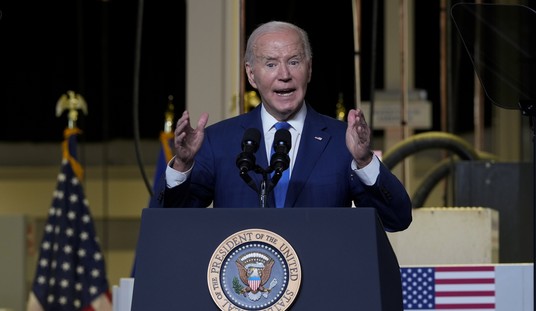A recent analysis published by the left-leaning Brookings Institution -- which highlights Pew data -- demonstrates significant erosion within Joe Biden's 2020 victory coalition, across multiple key demographics. It cites "major shifts away from Biden have occurred among Black, Hispanic, and Asian voters. Surprisingly, Trump appears to have gained more ground among college-educated Black and Hispanic voters than with less educated members of these groups. Equally surprising: Up to now, Trump has increased his support more among women than men." All survey data should be considered with a large grain of salt with half a year still remaining before the election. Things can, and will, change as events develop and the campaign unfolds. But as I've noted on several previous occasions, most Americans hold highly developed opinions of the two major party frontrunners, each of whom is a president. Public opinion about this slog of a rematch has therefore been remarkably stable thus far. And the movement in support, compared to 2020, has been almost universally negative for the incumbent:
Via @LPDonovan, this Brookings analysis of Pew data (2020 exits & recent 2024 polling) is full of red flags for the Biden campaign re: their victory coalition. And the "best" news for Biden on the chart (Millennials) is an error that actually favors Trump: pic.twitter.com/OfnQbWoKE9
— Guy Benson (@guypbenson) May 6, 2024
Take a look at that chart. Trump is eating into Biden's margin among quite a few groups, including dramatic improvements within communities of color. Based on these numbers, Trump has closed the gap by double-digit percentages among black voters (25 percentage points), Hispanics (13 points), and Asian-Americans (21 points). Looking at the far right column, the two "best" numbers for Bidens are typos. The chart shows a 13-point move toward Biden among 30-49 year olds (roughly Millennials) and a seven-point blue shift among Hispanics without college degrees. In fact, the actual data shows each of those two cohorts moving Trump's way by those margins. In other words, there should be two more red bars on the graphic. The Brookings analysis even flags Biden's decreased standing among this second-to-youngest voting group:
Also significant is the erosion of support for Biden among voters ages 30 to 49. This is the cohort most focused on family formation and most likely to become first-time homeowners, suggesting that the surging costs of child care and monthly mortgage payments may be reducing their support for the president.
Recommended
Given how narrow Biden's 2020 victories were in a handful of critical states, anything close to this level of diminished support could well spell doom for Biden in November. However: Two caveats, which are related. First, the Pew numbers showcased above compare 2020 exit polls (which measured election outcomes among real voters) and 2024 poll projections. This is not apples-to-apples, which brings us to the second point. Polling popular sentiment is useful to an extent, but the whole game is who actually casts ballots. As we have shown over and over again, Biden leads among the likeliest voters, while Trump will likely need unreliable and unregistered potential voters to participate in substantial numbers to erase that Biden advantage. Democrats are very good at ballot and turnout operations. Republicans are still arguing about whether they should even participate in things like mail-in or early balloting. The latest data point underscoring this issue comes from ABC News. Notice the difference in margins among adults versus registered voters versus likely voters. Six point swing:
🇺🇲 2024 GE: ABC/Ipsos [Among likely voters]
— InteractivePolls (@IAPolls2022) May 5, 2024
🟦 Biden 49% (+4)
🟥 Trump 45%
—
• Adults: Trump 46-44%
• Reg. voters: Biden 46-45%
• Likely voters: Biden 49-45%
—
Fav/unfav
Biden: 40-51 (-11)
Trump: 33-58 (-25)
—
538: #17 (2.8/3.0) | LVs | 4/25-30https://t.co/4U3sH04Cej pic.twitter.com/xCps2eJzhw
If this were just a single survey result, I wouldn't be beating this drum as loudly as I am. But this effect is all over the data, and has been for many weeks. I'll leave you with my related comments on Fox this week:
I addressed this crucial dynamic on @AmericaNewsroom earlier: pic.twitter.com/5ooTcfjY6Y
— Guy Benson (@guypbenson) May 6, 2024























Join the conversation as a VIP Member